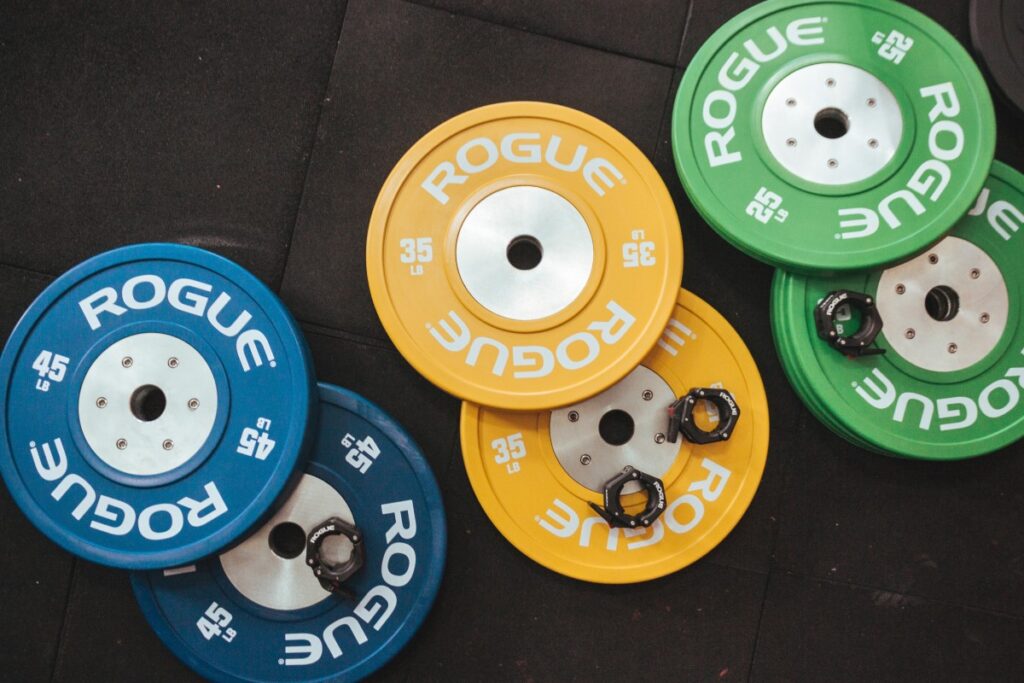Building a dream shape may take a few years of hard work. Nevertheless, to make this process efficient, we need at first to build awareness of what the body requires from us. Proper stimuli (training), fuel (diet) and recovery (sleep) are the most important factors. Below I explain why, focusing mostly on the workout routine.
1. Effective training
From the muscle building perspective, the most important factor is a good training. Here below I describe its crucial features.
- Technique
Undoubtedly the key is the proper technique of exercises. Until we don’t learn the correct movement patterns, we cannot aim to lift heavy without the risk of injury. Especially if we are new to strength training, we should put the ego aside and start with low weights and bodyweight exercises, to gain sufficient anatomical adaptation – strengthen the ligaments, tendons, build general strength and stability.
The fundamental movement patterns that everyone should practice, are: squat, hip hinge, push, pull, lunge and carry. Preferably we should incorporate in the training bi and unilateral exercises for each pattern.
A functional body is also a mobile body. If we want to grow the muscles and become stronger, we need to focus on full ROM (Range of Motion). By optimal flexion and extension in the joints, we allow our muscles to recruit more motor units. As an effect, we stimulate them better to grow and get stronger in different ranges of motion.
We should never sacrifice the technique for the sake of kilograms on the barbell. This only leads to the potential injury and break from lifting. Prior to heavy lifting, good mobility, stability and mind-muscle connection should be developed.
- Progressive overload

In order to get better muscle hypertrophy, in course of time, we need to progressively increase the intensity and/or volume. Intensity refers to how heavy we lift (expressed in kg or lb), while volume is the total weight lifted, so weight x reps x sets.
While total volume can be considered more important from the hypertrophy point of view, the intensity is crucial for increasing strength. Therefore, a healthy balance should be maintained between these two to obtain the best results over time.
Is there a perfect amount of sets and reps per specific exercise? No. But the range of 6-15 is perhaps the most effective for growth. However, if we simultaneously want to work on building strength, the rep range 1-6 should be also included in the workout plan. Nevertheless, according to Tudor Bompa and Carlo Buzzichelli, performing sets to failure or getting close to it in the rep range 3-6, we develop the absolute strength, which means gains in either strength and muscle size1.
Basically, in the powerlifting exercises, so deadlift, squat and bench press, we want to go heavy, but in the lower rep range. Since we engage almost all the body to perform them, they are very demanding, and in such a case it’s definitely more worthy to focus on increasing the intensity. To fully recover for each set, we should take a longer rest. Sample sets x reps for these exercises: 5×3, 4×4, 4×5. Rest time between sets: 3-6 min. I’m personally a big fan of all 3 mentioned exercises. Even though they are techincally very complex, I believe everyone should learn to perform well at least squat and deadlift (bench press is less relevant for obtaining a functional body).
For beginners, the linear progression of intensity will be the most effective. Adding weight to the bar consecutively, week by week, will result in easy strength and muscle gains. However, we should take into account that the slower we progress, the more sustainable adaptation we provide to our bodies. So no rush, the strength is built in years, not in weeks. Of course, in the case of more advanced lifters, more advanced training programs and manipulating different variables are needed to increase the performance.
In the other compound movements or isolation exercises, we can easily perform a high rep range, trying to manipulate the volume. Exercises like bicep curls, lunges, or cable chest flyes should be ideally performed in 10+ reps per set. Performing isolation exercises, the injury risk is very low, so those can be even taken to failure. Sample sets x reps for these exercises: 3×12, 4×10, 3x amrap (as many reps as possible). Rest time between sets: 1-3 min.
We should bear in mind that the progressive overload doesn’t mean however adding weight, reps, or sets every week. Especially when it strictly comes to hypertrophy training. The most important is bringing sets close to failure. To achieve this we should keep from 1 to 3 reps in reserve every set, unless we use the advanced amrap technique, so bringing sets to failure.
- Frequency
How often should we train? I would say, 3 to 6 training sessions a week is an optimal range. In less than 3 sessions it might be hard to optimally stimulate all the muscles groups to grow, and after more than 6 would be very hard to recover (unless we are talking about professional athletes). For example, currently, I train 4 times a week for 1,5h, using Upper-Lower Split.
Other popular training splits are Full Body and Push-Pull-Legs. Each one has its own pros and cons, so everyone should experiment and choose the most suitable for the needs. More important is definitely how often we train a muscle group per week. If we want to provide a sufficient stimulus we should train the big muscle groups at least twice a week.
Preferably we should do 10-20 sets per muscle group per week. Again, this refers mostly to big muscle groups, like: quads, glutes, hamstrings, lats, or delts. Additionally, we need to have in mind that muscles like the front delts, biceps and triceps are taking part in all of the pushing and pulling exercises, so those are already engaged when we train chest and back. Therefore, specifically for these 3, I would dedicate 1 exercise per week.
When it comes to number of sets, 3 to 6 per exercise seems the most reasonable range. So, depending on the goals and time we want dedicate to the workout, we can adjust the number of sets.
- Deload
Sometimes doing less means bigger gains. If we are excessively fatigued, we cannot perform our workouts at the highest efficiency. It’s a good moment to do the deload week. It’s usually done after 6-8 weeks of training. However, everyone is different, and it all depends on the intensity of the workouts.
The beginners usually don’t need to deload so frequently as intermediate and advanced lifters. It’s because their nervous system is not that exposed to the big strains. Overall, the best is to simply experiment with the training variables, learn our own body responsiveness and apply the deload when it’s really needed.
The easiest way to deload is to cut the intensity or/and volume by 50-70% for the period of one week. This allows the nervous system to take a little ‘rehab’ from heavy lifting, which helps us to come back stronger and more motivated.
2. Tracking the diet

I know, it’s one of the least enjoyable parts of bulking, as well as cutting. But I believe it’s necessary not only for the sake of counting macros but moreover for learning. Through everyday updates in the diet diary, we start to notice which foods have more nutritional values, and which less. It’s the best way to build a good, long-lasting relationship with food.
Nowadays it’s enough to have an Android or iPhone to easily track the diet for free. I personally use Cronometer, but there’s a lot of choice on the market, it’s enough to enter google play and do a little research.
- Daily calory intake
If we already downloaded the app, now it’s time to establish the general macronutrients demand level. The question is, do we need to stay in the caloric surplus to build muscle mass? Nope. But it mostly depends on our level of advancement regarding training.
For total beginners, every gym exercise is a brand new stimulus for their muscles to grow. Such a group can also easily build muscles, being in a slight caloric deficit. This would cause so-called ‘body recomposition’ – burning fat and building muscles at the same time. Everyone’s goal, right? So yes, with precise nutrition and a good workout routine it can be accomplished.
However, if someone has a few years of training behind, it’s way harder to gain additional muscle mass. For the more advanced lifters, the most efficient is to separately go through the bulking and cutting phases. It doesn’t mean that such people cannot try the body recomposition, but it just seems inefficient, considering very small gains in a very long time.
To estimate our caloric demand we can use this simple calculator.
- Daily protein intake
To build the muscle mass, it’s crucial to deliver a sufficient amount of protein every day. Actually it’s the most important diet aspect if we talk about muscle growth. For those who don’t want to track their macros intake, I’d recommend at least to focus on eating a decent amount of proteins in every meal. If you want to know better why, I send to the article: All You Need To Know About Protein.
3. Sleeping long enough
If we want to maximize the outcomes, we need to sleep at least 7h/day. Muscles are fibres, and those need to repair themselves and adapt to the new training stimuli, which happens while we sleep. The bigger we grow, the stronger we get, and therefore the bigger weights we can lift. And sleep is a key to make this cycle more efficient. To gain insight into how fascinating the phenomenon of sleep is, please check out: Why Sleep Is More Important Than You Think.
4. Tracking the progress

Trying to make a progress, we need to have control over what we are doing. The tracking methods will depend on our goals, but I can bet everyone wants to get stronger and look better.
To track the gym performance, I highly suggest the app Fit Notes. It’s free, very simple in use and allows to track how much we lift on each training session.
For body composition changes, there’s nothing better than the mirror and photos. Besides, we may notice some side effects of getting bigger or leaner, like more fitted pants or problem with finding a suitable shirt.
5. Being consistent
When we already know which tools are necessary to obtain a stronger and more appealing body, it’s time to apply them and create long-lasting habits. In order to make all the system work, the regularity needs to be our permanent companion.
We need to keep ourselves hungry for progression and motivated for success. Is it the visual body improvement, a better mood or strength, everyone can find their motivation for the systematic training.
There are thousands of motivational speeches available online, as well as tricks and advices on how to create sustainable habits. If we lack motivation they are a good point to start. But I believe that the key to productivity is to simply mute the thoughts, stop searching for excuses and just get to work.
Conclusions
If we want to build muscle mass in a healthy and sustainable way, a mindless ‘pumping iron’ is not the best way. The training is indeed the most important, but it also has to be well organized and properly executed. A combination of good technique, progressive overload, and sufficient frequency will bring the demanded results. And if we add a sufficient recovery and daily protein intake, there’s no chance we won’t put on some muscles. There is a lot to remember, but as I mentioned – the shape is built in years, not weeks. Therefore, be patient, track your progress and create healthy, long-lasting habits.
